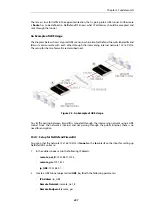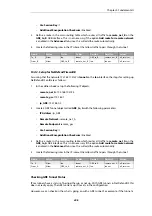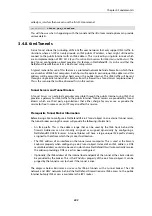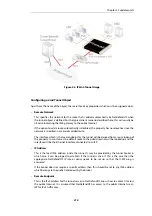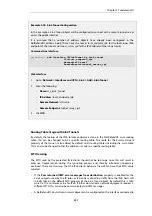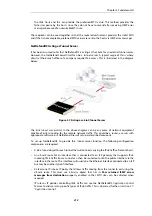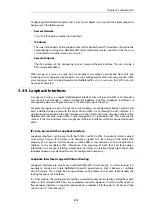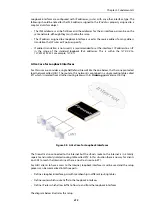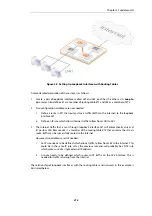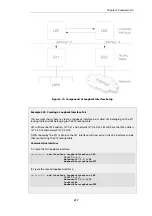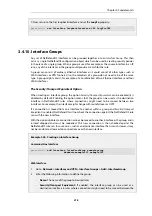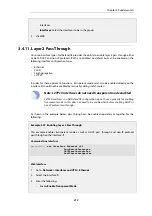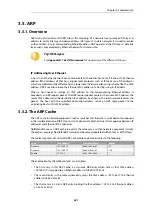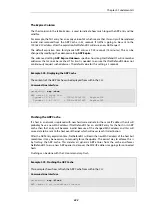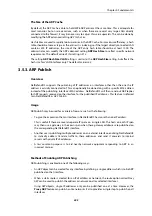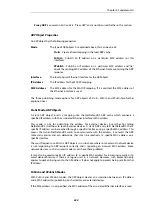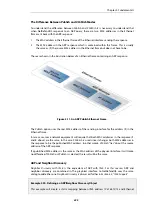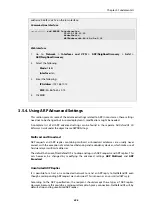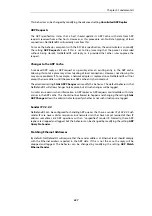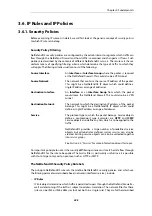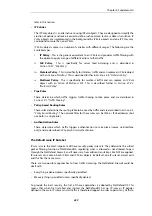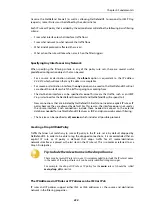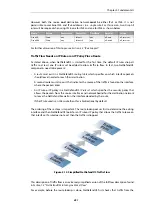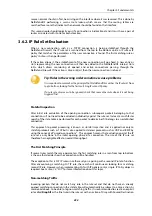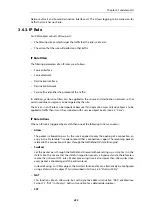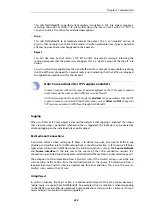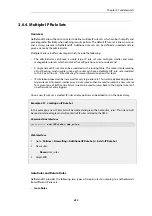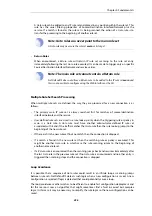
3.5. ARP
3.5.1. Overview
Address Resolution Protocol
(ARP) allows the mapping of a network layer protocol (OSI layer 3)
address to a data link layer hardware address (OSI layer 2). In data networks it is used to resolve
an IPv4 address into its corresponding Ethernet address. ARP operates at the OSI layer 2, data link
layer, and is encapsulated by Ethernet headers for transmission.
Tip: OSI Layers
See
for an overview of the different OSI layers.
IP Addressing Over Ethernet
A host in an Ethernet network can communicate with another host only if it knows the Ethernet
address (MAC address) of that host. Higher level protocols such as IP make use of IP addresses
which are fundamentally different from a lower level hardware addressing scheme like the MAC
address. ARP is used to retrieve the Ethernet MAC address of a host by using its IP address.
When a host needs to resolve an IPv4 address to the corresponding Ethernet address, it
broadcasts an ARP request packet. The ARP request packet contains the source MAC address, the
source IPv4 address and the destination IPv4 address. Each host in the local network receives this
packet. The host with the specified destination address, sends an ARP reply packet to the
originating host with its MAC address.
3.5.2. The ARP Cache
The
ARP Cache
in network equipment, such as switches and firewalls, is an important component
in the implementation of ARP. It consists of a dynamic table that stores the mappings between IP
addresses and Ethernet MAC addresses.
NetDefendOS uses an ARP cache in exactly the same way as other network equipment. Initially,
the cache is empty at NetDefendOS startup and becomes populated with entries as traffic flows.
The typical contents of a minimal ARP Cache table might look similar to the following:
Type
IPv4 Address
Ethernet Address
Expires
Dynamic
192.168.0.10
08:00:10:0f:bc:a5
45
Dynamic
193.13.66.77
0a:46:42:4f:ac:65
136
Publish
10.5.16.3
4a:32:12:6c:89:a4
-
The explanation for the table contents are as follows:
•
The first entry in this ARP Cache is a dynamic ARP entry which tells us that IPv4 address
192.168.0.10
is mapped to an Ethernet address of
08:00:10:0f:bc:a5
.
•
The second entry in the table dynamically maps the IPv4 address
193.13.66.77
to Ethernet
address
0a:46:42:4f:ac:65
.
•
The third entry is a static ARP entry binding the IPv4 address
10.5.16.3
to Ethernet address
4a:32:12:6c:89:a4
.
Chapter 3: Fundamentals
221
Summary of Contents for NetDefendOS
Page 30: ...Figure 1 3 Packet Flow Schematic Part III Chapter 1 NetDefendOS Overview 30 ...
Page 32: ...Chapter 1 NetDefendOS Overview 32 ...
Page 144: ...Chapter 2 Management and Maintenance 144 ...
Page 284: ...Chapter 3 Fundamentals 284 ...
Page 392: ...Chapter 4 Routing 392 ...
Page 419: ... Host 2001 DB8 1 MAC 00 90 12 13 14 15 5 Click OK Chapter 5 DHCP Services 419 ...
Page 420: ...Chapter 5 DHCP Services 420 ...
Page 573: ...Chapter 6 Security Mechanisms 573 ...
Page 607: ...Chapter 7 Address Translation 607 ...
Page 666: ...Chapter 8 User Authentication 666 ...
Page 775: ...Chapter 9 VPN 775 ...
Page 819: ...Chapter 10 Traffic Management 819 ...
Page 842: ...Chapter 11 High Availability 842 ...
Page 866: ...Default Enabled Chapter 13 Advanced Settings 866 ...
Page 879: ...Chapter 13 Advanced Settings 879 ...

